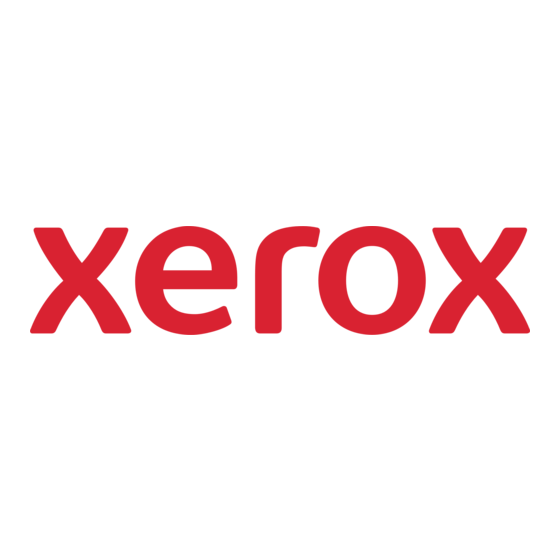Xerox 7400DXF - Phaser Color LED Printer Tamamlayıcı Kılavuz - Sayfa 6
Hepsi Bir Arada Yazıcı Xerox 7400DXF - Phaser Color LED Printer için çevrimiçi göz atın veya pdf Tamamlayıcı Kılavuz indirin. Xerox 7400DXF - Phaser Color LED Printer 8 sayfaları. Evaluator guide
Ayrıca Xerox 7400DXF - Phaser Color LED Printer için: Broşür ve Teknik Özellikler (4 sayfalar), Aksesuar Kılavuzu (3 sayfalar), Aksesuar Kılavuzu (3 sayfalar), Değerlendirici El Kitabı (20 sayfalar)

The areas on the hard disk that stored the deleted file's data are marked as free and
available for reuse, and may over time be overwritten by other data as other files are
created and written to the hard disk. The deleted file's data, however, is still present
for an unpredictable amount of time after the file is deleted. Depending on the amount
of hard disk activity, this data may remain on the hard disk for a considerable period
of time.
By using special software and techniques, it is sometimes possible to read the data of
a deleted file from a hard disk, if it has not been overwritten by the data of other files.
This creates the possibility that an unauthorized person with the proper technical
knowledge could recover data from a sensitive file, even though the file has been
deleted.
On Xerox Phaser printers, the format of stored print jobs, discovered network
printers, and job accounting data on the printer's disk is in a proprietary, unpublished
binary format. While this would prevent casual interpretation of the data, a person
with sufficient technical skills would probably be able to reverse-engineer the
structure and format of these files and interpret the data.
To address these security concerns, Xerox Phaser printers now support a Hard Drive
Overwrite Security software feature. This feature obliterates the data stored on the
hard disk of a file marked for deletion, before the file's directory entry is removed
and its storage space on the hard disk is marked as available for reuse.
The obliteration of the data is accomplished by overwriting the entire area of the hard
disk that stores the data of the file to be deleted with a pattern of all 'zero' bits, then
all 'one' bits, then with a random pattern of bits.
This technique is described in the United States government industrial security
standard DoD 5200.28-M. This standard can be viewed at:
https://rimr.tatrc.org/DoD1.html
. Xerox Phaser printers that support Hard Drive
Overwrite Security fully comply with this standard.
The Hard Drive Overwrite Security feature is not enabled by default. It can be
enabled from the printer's front panel or from within the printer's CentreWare IS
internal web server; see section 5 of this document for details on configuring security
features.
When the Hard Drive Overwrite Security option is enabled, the system command to
delete files in the printer's operating system moves the files to be deleted from the
printer's internal hard disk into a special directory, where they are processed by a
background task on the printer. This background task performs the Hard Drive
Overwrite Security process as described above, and then deletes the file directory
entry. This software design, by using a temporary folder, insures that the Hard Drive
Overwrite Security process will take place for every file, even if the printer is
restarted while the Hard Drive Overwrite Security is processing files.
When Hard Drive Overwrite Security is enabled, all files deleted from the printer's
internal hard disk will be overwritten, regardless of the printer software controls or
commands that deleted it or what type of file it is. There are no exceptions to this
rule.
